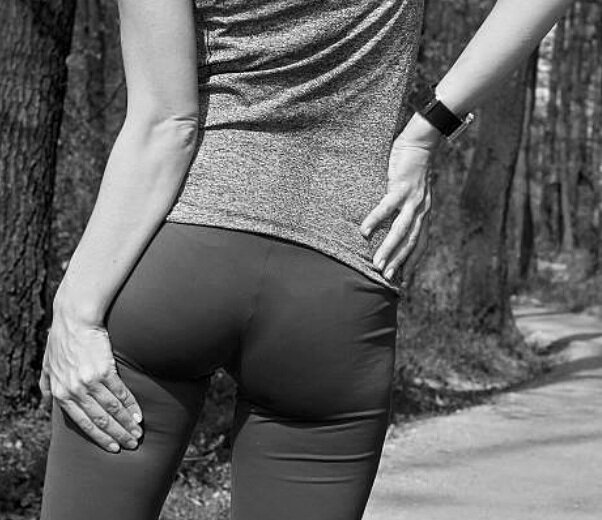LISBETH HOYT, PT, DPT.
Let’s talk about the hamstrings! We tend not to think a lot about these muscles until something goes wrong, but once it does, we can’t stop thinking about them. It’s time for a quick anatomy lesson! Your hamstring muscles are on the back of your thigh and are composed of three different muscles; the biceps femoris, which has a long and short portion, semitendinosus, and semimembranosus. The hamstrings are responsible for bending your knee as well as extending your thigh back behind you at the hip joint.
Hamstring tendinopathies, including tendinitis and tendinosis, are fairly common running-related injuries we see at Custom Performance. Unlike an acute hamstring muscle tear or strain, the mechanism of hamstring tendinopathies is not always linked to one particular run but can build over time. Tendons make up each end of a muscle and are what attaches the muscle to your bone. Proximal hamstring tendinopathies (the top tendons of your hamstrings) feel like a deep pain at the junction where your hamstrings and butt meet. The pain is typically worse with uphill running, speedwork, squatting, and sitting for long periods of time.
This type of injury tends to have a long road to full recovery–think three to six months. Your natural reaction will be to try and stretch the hamstrings to get rid of the tight pulling feeling you consistently have; however, this is the opposite of what you want to do!
In 2016, a paper was published in the Journal of Orthopaedics and Sports Physical Therapy examining the clinical assessment and management of proximal hamstring tendinopathy. While rehab of any injury is never a one-size-fits-all approach, the authors recommend progressing through four stages. They establish that progression through the stages is based on symptoms and response to exercise load–not specific time frames. Daily pain is monitored and the tendon is regularly load tested.
Stage one includes isometric loading of the hamstrings (activation of the muscle with no movement). This is done in a position of limited hip flexion, such as a single leg bridge hold. An example would be a single-leg bridge hold. As this becomes stronger and less painful, the load through the tendon is increased by increasing the working range of motion for the hamstring. The final stages of rehab include sports-specific strength with explosive movements and a return to running plan.
If you’ve been dealing with (or ignoring) pain in your butt while running, it may be time to get that checked out… especially before starting a new training plan!
Goom TSH Malliaras PM Reiman, MP Purdam CR.Proximal Hamstring Tendinopathy: Clinical Aspects of Assessment and Management. Journal of Orthopaedic & Sports Physical Therapy. 2016; 46(6), 483–493.

